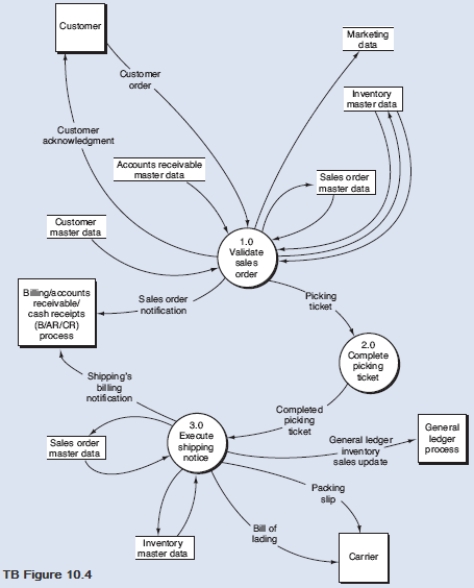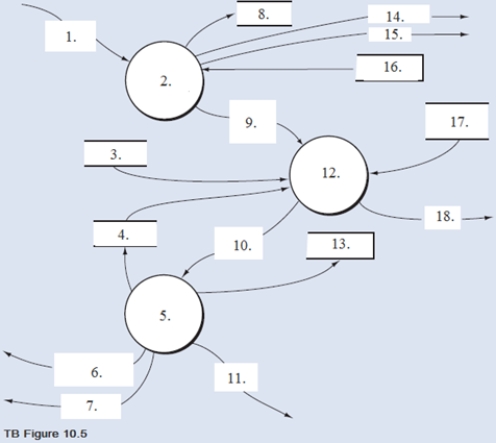Below is a narrative of the "Validate sales order" portion of the order entry/sales process.
Narrative Description
How does the OE/S process then validate a customer order? First,process 1.1 verifies the availability of the requested inventory by consulting the inventory master data.If a sufficient level of inventory is on hand to satisfy the request,the order is forwarded for further processing,as depicted by the data flow "Inventory available order." Conversely,if a customer orders goods that are not in stock,process 1.1 runs a special back order routine.This routine determines the inventory requirement necessary to satisfy the order and then sends the back order request to the purchasing department.This activity is depicted by the "Back order" data flow,which in reality is a specific type of exception routine (i.e. ,a specific type of reject stub).If the customer refuses to accept a back order,then the sales event is terminated and the order is rejected,as shown by the "Reject" data flow.Information from the order (e.g. ,sales region,customer demographics,and order characteristics that reflect buying habits)that has potential value to marketing is recorded in the marketing data store.
After assuring inventory availability,process 1.2 establishes the customer's existence and then evaluates credit.The credit check adds the amount of the order to accounts receivable balances and open sales orders (i.e. ,orders about to be receivables),and compare that total to the credit limit.If the customer has exceeded their credit limit,the order is rejected.
Upon a successful credit approval,process 1.3 performs the following activities simultaneously:

Required:
From the DFD in TB Figure 10.4 and the narrative description above,explode bubble 1.0 into a lower-level diagram showing the details of that process by identifying the words that belong in items 1 to 18 (TB Figure 10.5). 

Definitions:
Societal Stigma
The phenomenon where individuals with certain characteristics, behaviors, or conditions are socially discredited or discriminated against.
Psychodynamic Therapies
A group of therapies that focus on unconscious processes as they are manifested in a person's present behavior, based on psychoanalytic principles.
Depth Therapies
Psychological treatments that aim to explore and address the unconscious content of a patient's psyche.
Humanist
An advocate or follower of the principles of humanism, emphasizing the value and agency of human beings, individually and collectively, and generally preferring critical thinking and evidence over acceptance of dogma or superstition.
Q1: Which of the following statements is true?<br>A)
Q45: Segregation of duties consists of separating the
Q60: A(n)_ relates to a specific AIS process,such
Q60: Goal congruence exists when each individual manager's
Q76: The control plan confirm input acceptance helps
Q80: Input devices that capture printed images or
Q82: The _ is the primary key for
Q85: The use of the letter M in
Q95: The VP of finance usually has the
Q109: Controls that stop problems from occurring are